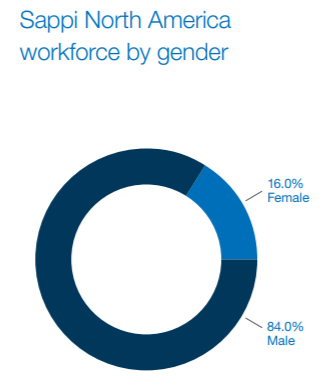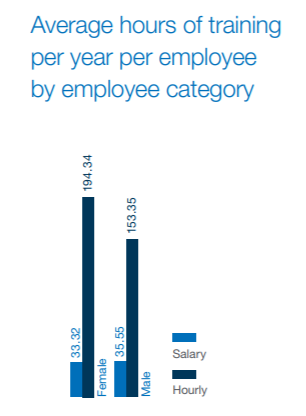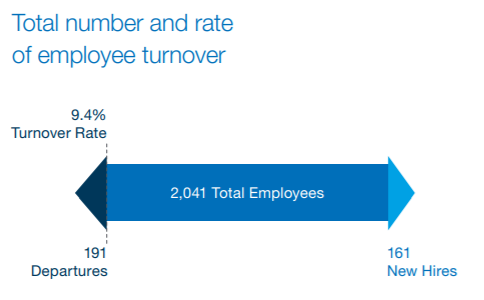Why Social Indicators are an Important Part of Sappi North America's Sustainability Strategy
Social indicators
Sappi takes a very active approach to social responsibility, both regionally and globally. Our three primary stakeholder groups are our employees, our customers, and the communities in which we operate. In addition to providing skilled jobs and continued job training, we improve the lives of our workforce and community by promoting freedom of association, nondiscrimination and the abolition of child labor.
We work hard to promote employee training and have seen the average hours of training increase from 80 hours in 2017 to 114 hours in 2018 per year per employee. The reasons for this increase include the significant capital investments such as the new headbox for Cloquet Paper Machine 12, the Somerset woodyard equipment upgrade and the rebuild of Somerset Paper Machine 1—all of which required new qualification training to ensure safe operation of the equipment.
The decrease in salaried employee training is for similar reasons; the capital initiatives required extra time spent on these new initiatives, but it is through tracking these performance indicators that we are able to make adjustments to correct declines.
A similar trend is occurring with an increased turnover rate. This is a function of an aging workforce, an increase in retirements and improvement in economic activity. To address, we’ve increased STEM recruitment at local universities, promoted employee referral programs, and invested in employee development.
Included are demographic results for the year in the categories of age, gender, and employees represented by collective bargaining agreements.
Read more from Sappi North America's 2018 Sustainability Report here: tiny.cc/SappiNA_SR18






